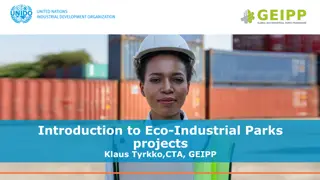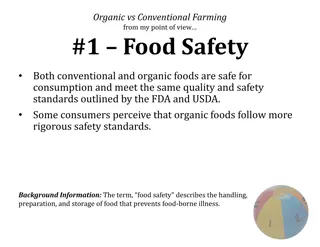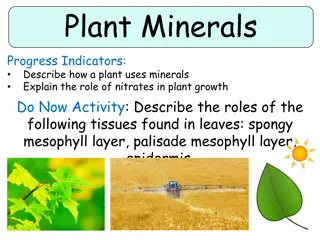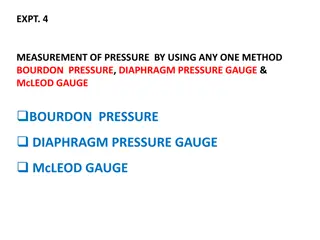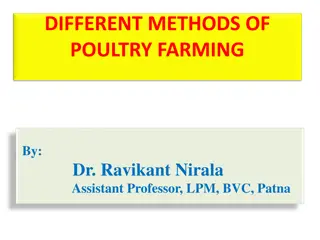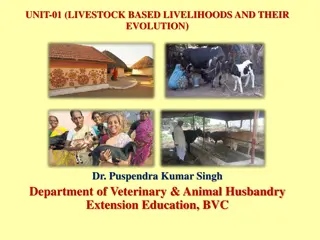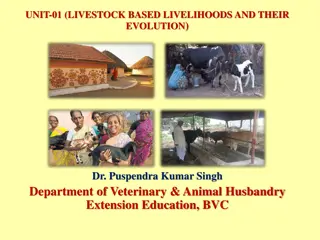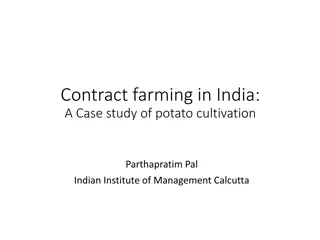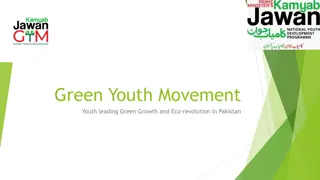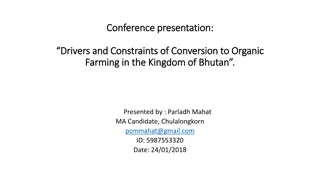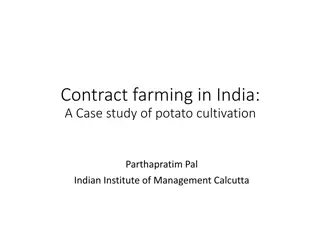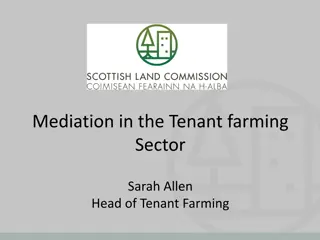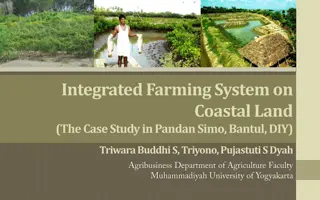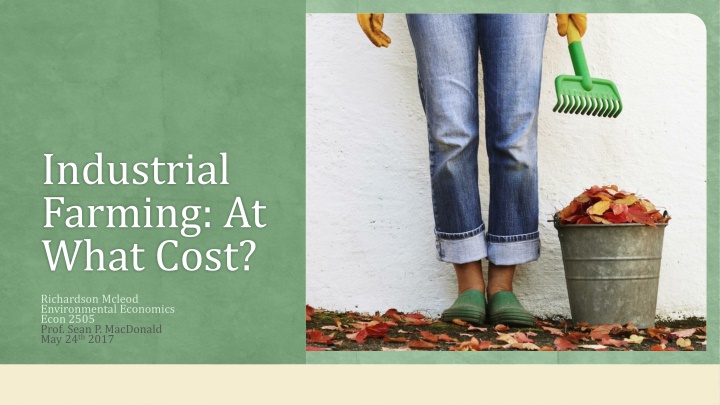
Industrial Farming: Effects, Costs, and Sustainable Solutions
Explore the impacts of industrial farming on the environment, from soil erosion to greenhouse gas emissions. Discover why industrial farming persists despite its detrimental effects and learn about sustainable farming practices as a solution to mitigate environmental damage. Delve into the importance of oats in reducing chemical fertilizer use and erosion potential.
Download Presentation

Please find below an Image/Link to download the presentation.
The content on the website is provided AS IS for your information and personal use only. It may not be sold, licensed, or shared on other websites without obtaining consent from the author. If you encounter any issues during the download, it is possible that the publisher has removed the file from their server.
You are allowed to download the files provided on this website for personal or commercial use, subject to the condition that they are used lawfully. All files are the property of their respective owners.
The content on the website is provided AS IS for your information and personal use only. It may not be sold, licensed, or shared on other websites without obtaining consent from the author.
E N D
Presentation Transcript
Industrial Farming: At What Cost? Richardson Mcleod Environmental Economics Econ 2505 Prof. Sean P. MacDonald May 24th2017
Context Industrial farming Effects of industrial farming Why we still do it. Sustainable farming What if The World Went Vegetarian? Urban Farming
Industrial Farming Industrial farming is intensive livestock and crop production which large number of livestock are raised indoors in conditions and corps are chemically enhanced intended to maximize production at minimal cost. Industrial farming is more about profit than is about providing the best product to it s consumer
Effects of Industrial Farming? An estimated 6.9 billion tons of soil are lost ever year in the United States due to erosion. 91% of all cultivated land in Iowa is rotated between 2 corps: corn and soybean due to Governmental subsidies for these corps. Fertilizer Runoff creating Dead Zones Total emissions from global livestock: 7.1 Gigatonnes of Co2-equiv per year, representing 14.5 and 18 percent of all anthropogenic Green House Gas emissions.
Why do we Still do it? The United States pays around $20-$25 Billion per year in subsides to farmers growing commodity crops We do not put a price tag in the amount of environmental damage industrial farming costs.
Sustainable Farming Sustainable agriculture is the production of food, fiber, or other plant or animal products using farming techniques that protect the environment, public health, human communities, and animal welfare. This form of agriculture enables us to produce healthful food without compromising future generations' ability to do the same. Sustainable farms produce crops and raise animals without relying on toxic chemical pesticides, synthetic fertilizers, genetically modified seeds, or practices that degrade soil, water, or other natural resources.
Oats? Adding oats to your corps reduces the need for chemical fertilizer by 90% by taking the necessary mineral from the atmosphere into the roots. It also lessens the erosion protenal
Benefits of Being a Vegetarian Conserves more water Cleans the soil Reduces energy consumption Purifies the air Healthier Lifes
Urban Farming Urban farming is the practice of growing, processing and distributing food in and around that town, city or village.
Benefits of Urban Farming Creates a jobs locally Lessens emissions Creates a involved community Access to cheaper and healthier food Lower chemically enhanced
Works Cited Lusk, J. (2016). Why industrial farms are good for the environment. The New York Times, Ishler, V. (2010) Carbon, methane emissions and the dairy cow. PennStateExtension Biello, D. (2008) Fertilizer runoff overwhelms streams and rivers creating vast Dead Zones . Scientific American. McCarthy, J. (2016) 9 Ways veganism is helping the plant. Global Citizen. Food and agriculture organization of the United Nations. (2006) Horrigan, L., Lawrence, R.S., & Walker, P. (2002). How sustainable agriculture can address the environmental and human health harms of industrial agriculture. Research Review, 110, 1-12 https://www.brooklyngrangefarm.com/ https://www.youtube.com/watch?v=ANUoAdXfA60&t=34s


